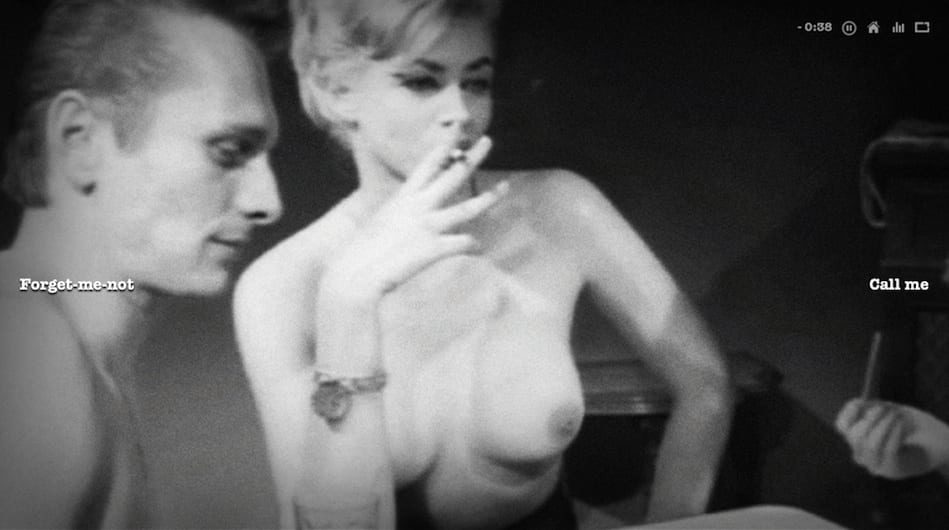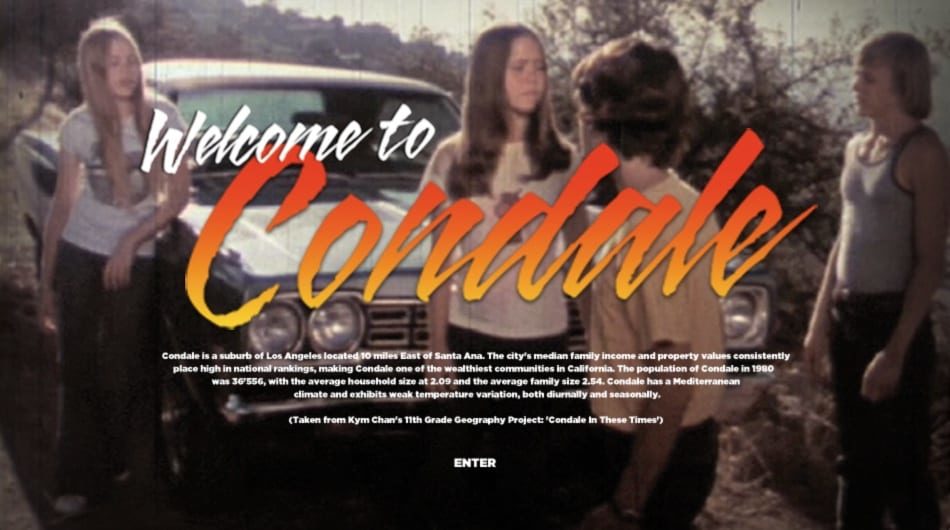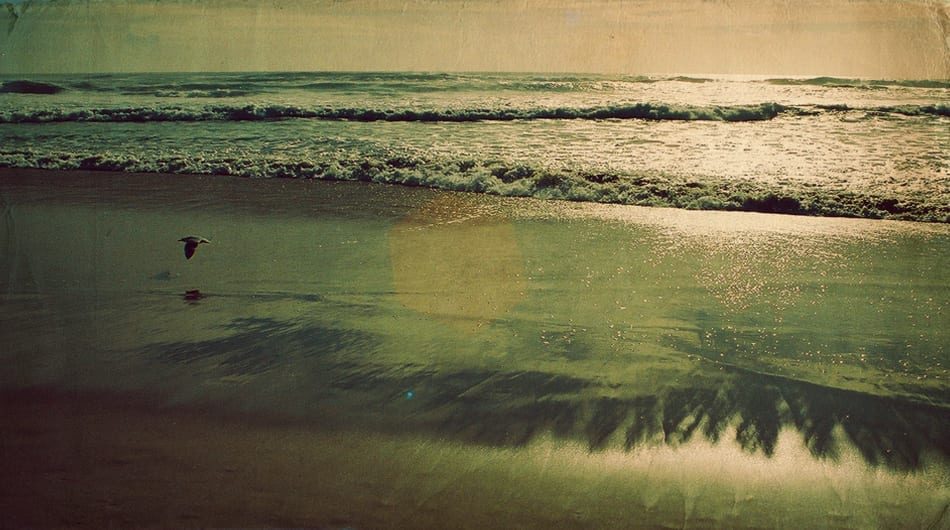Film and photographic duo The Kissinger Twins are not, contrary to the moniker, genetically related. Kasia Kifert (X-X chomosomes) and unit9 interactive director Dawid Marcinkowski (X-Y) first collaborated as friends and now function as a creative and personal coupling. Their work embraces the internet age and the fragmentation of linear narratives permitted, and fostered, by the interactive potential of digital storytelling.
Dancing between minimalist visions of the future and nostalgic longings for a simpler past, The Kissinger Twins’ work often blends elements of fact and fiction to create hyper-real experiences that pull on emotion and imagination in equal measure. To date they’ve worked on an interactive music video made of a rotating cube of B-movie clips, conjured up a town frozen in time for music act Summer Camp and, most ambitiously, crafted an online film where viewers are free to determine the course they plot through a sinister beauty clinic.
In an uncharacteristically linear manner they explained their creative process to OnePointFour. But first here are the links to their interactive sites:
Interactive Forget Me Not
Interactive Condale for Summer Camp
Interactive Sufferrosa
How did you both come to meet each other and galvanise into Kissinger Twins (and what’s the origin of the name?! Henry?)
No. Henry was a bad guy. When talking about American National Security Advisors in 1970s we prefer Zbig Brzezinski. Such a cool guy and Polish.
Seriously, we’ve been friends for a long time and then a couple. So it is a kind of ironic comment to our new status.
How do you approach your collaboration as a duo?
Dawid complicates. Kate simplifies.
Watching / playing with Forget Me Not – the interactive cube music video – you don’t get the sense that the focus is on any of the individual films but instead is on evoking a mood. What was the intention behind this project? And what was it that drew you to the films you chose?
Yes, the mood is most important here as well as mutants, flying saucers and Emmanuelle Seigner. Forget Me Not is a tribute to old 1950s sci-fi and horror movies. Most people know Ed Wood, because of Tim Burton’s movie, but there were a lot of different mental guys back then like Tom Geeff, the director of Teenagers From Outer Space. All the movies we chose are weird, totally serious but non-pretentious. We love them and want to introduce them to the younger generation, especially that now all those movies are public domain.
Your film projects typically tell stories from multiple perspectives – how do you approach structuring these interwoven elements?
At the beginning of each project we need to make a couple of creative decisions starting with the question ‘what is more important, mood or the story’. Then we decide if the movie is linear or non-linear. Sufferrosa, our biggest project so far, is a non-linear cinematic labyrinth. The viewer builds the story by exploration of its structure. (View interactive Sufferrosa here)
Exploration and immersion are more important than classic dramaturgy here. From a storytelling point of view, the most important elements are the key scenes, the ones that give crucial information about the story. Welcome To Condale, our other non-linear project is more impressionistic and has a looser structure. It’s more like relaxing browsing. In our linear projects (you can include Forget Me Not here) we play with randomness. That’s what we believe makes them fresh and surprising. Every time you watch it is different. We also try to make these projects rewarding. Whatever the viewer does, he could be immediately rewarded. We try to remember that people now have such a short attention span. In the 1980s a three-minute long music video was ultra short form. Now three minutes feels like an age.
(View interactive Forget Me Not here).
Talk us through the evolution of the idea behind Condale for Summer Camp – how did you reach the idea of a fictionalised town playing host to imagined nostalgic memories? (View interactive Condale here)
We found the band interesting because of their blog, full of strange retro imagery. So when they offered us creative direction of their debut album Welcome To Condale, we immediately decided to build the storytelling universe around the titular city. We were curious about who were the young people living there… And then we found this surreal idea about the place that stuck in time. In this small city time is always 1984. It is like Back To The Future paused. Just look at the clock in the top right corner of the website. Welcome To Condale become a bigger trans-media project than we expected with interactive video website, book, music video, photo editorial (and the album as a center piece).
What’s interesting about a project like Condale is the element of twisting reality to your own ends – after all it isn’t complete fantasy but drawn from these universally recognisable elements of American pop-culture we’ve been saturated with through our lives. But it doesn’t seem like you’re trying to say those images are fake – more that they almost seem to form a special category of memory that isn’t fully fiction but not actually fact. Is that something you’re conscious of?
We often blur the line between reality and fiction. Condale reality has something common with memories and dreams. You know… when time goes by you’re not sure what is real and what is a play of imagination. This place exists somewhere inbetween real and virtual.
What can you tell us about your new project, The Trip, and ahead of its release?
We were asked many times why we make interactive films. Is traditional cinema not enough? We decided to answer with this project. We made an interactive and linear movie at the same time. The same story two different approaches. One is a short (but epic) 10 minute movie that uses VO as a main narration tool, the other one could be described as a 10 partial dreamy interactive narrative space.
The main character here is Jack Torrance. An 80 year old rich guy claiming to be the mastermind behind one of the biggest hoax of 20th century – the lunar landing (his words). We met him in a hotel bar during our holiday. There was something moving in his words about manipulation and technology.
Whose work do you admire? Or where do you look for sources of inspiration?
Good question. We are old school. We’re looking for inspiration in the past but do not use it directly. We transform it. We are surprised how often people now take the scenes from old movies and make exactly the same in their works. It is tacky.
Thematically, the current generation of video artists seem to be grappling with their response to the internet. Would you in any way say that those sorts of anti- or post-formalist concerns are at play in your work, specifically Sufferosa, your interactive film?
Amazing question!
One of the biggest influences for Sufferrosa is a 1966 Polish movie “The Manuscript Found in Saragossa‘. The best Polish movie ever made.
Louis Bunuel, Martin Scorsese and Francis Ford Coppola described this movie as hugely influential.
Manuscript, directed by J.W.Has, has an unbelievable complex structure. It is a kind of story inside the story inside the story..
Bunuel’s The Discreet Charm of the Bourgeoisie is a simple movie compared to it.
The music was composed by Krzysztof Penderecki.
Anything else you’d like to share?
Bee Girls, our next project will come later this year and we’ll finish Sufferrosa on iPad soon. We’re really excited about it. We’ve worked on a new interface, new edit, new scenes. We’ve dedicated Sufferrosa to KLF for burning one million pounds. It will be a free App.
LINKS:
unit9 showreel

















